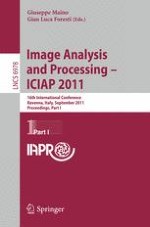The two-volume set LNCS 6978 + LNCS 6979 constitutes the proceedings of the 16th International Conference on Image Analysis and Processing, ICIAP 2011, held in Ravenna, Italy, in September 2011. The total of 121 papers presented was carefully reviewed and selected from 175 submissions. The papers are divided into 10 oral sessions, comprising 44 papers, and three post sessions, comprising 77 papers. They deal with the following topics: image analysis and representation; image segmentation; pattern analysis and classification; forensics, security and document analysis; video analysis and processing; biometry; shape analysis; low-level color image processing and its applications; medical imaging; image analysis and pattern recognition; image and video analysis and processing and its applications.
